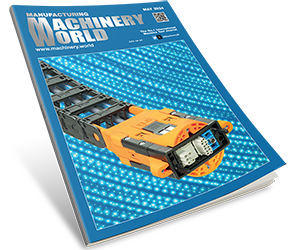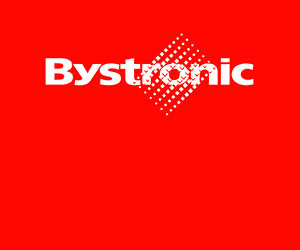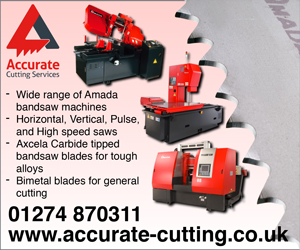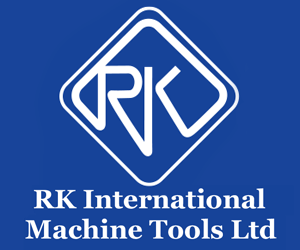High quantities, extreme quality requirements and keen competition are shaping the production of injection-moulded parts for the automotive industry. For ensuring this balancing act successfully, Denk Kunststofftechnik relies on consistent automation with powerful handling components at the front-end: SCHUNK grippers permanently ensure high precision in the self-designed handling systems and reliably supply the plant controller with relevant process data.
60% full automation, and the trend is rising rapidly. “We are no typical plastic injection moulders”, says Konstantin Spenst, Head of Automation Technology at Denk, who sees a significant factor for the success of the high degree of automation at the Gevelsberg site in the Ruhr metropolis. This is the only way for being able to output between 500,000 and well over 2 million parts per year depending on the component and plant, and to check 100% of them. “Precision and verifiability are decisive factors for us. The newer the plant, the more steps are monitored”, Spenst explains. “Recently we wrote a chain of 800 steps, only 30 of them were paths. Everything else were just commands of pneumatic components or queries with alarm.” Around 60% of the range was operator messages such as “end position not reached”, “part lost” or “part not correctly mounted”. What is decisive nowadays is that the user receives as much information as possible because in the case of a malfunction they must immediately identify the reason, Spenst highlights. This is particularly because of the precise monitoring of the grippers, because only in this way damages to the tools and system downtimes could be avoided. Denk always works in a multistage system here: First all parts are monitored whether they are correctly mounted. This is followed by a presence monitoring immediately before mounting the tool, before ultimately checking immediately after removal and finally during storage. This is the only way to prevent parts from being lost in the handling process, causing an expensive crash of the tool.
Gripper precision is a decisive criteria
The gripping systems that are increasingly being conceived, designed, and built independently by Denk since the beginning of 2010 are of double significance: They must ensure reliable handling whilst at the same time facilitating reliable monitoring of the relevant process steps. Primarily the latter had proved to be a challenge for a long time now, because by far and away not all gripping system components available on the market permanently achieved the required level of precision and process reliability, not even the high-end components. “With our gripping systems, it is very important of how precise monitoring could be done”, Spenst underlines. “Because with 1 mm play in the gripper jaws and a closing stroke of 3 mm reliable monitoring is not possible.” It repeatedly transpired with grippers from various manufacturers that sensors delivered unreliable results because the play in the jaw guidance was so large. “Over the course of time, we have realized that SCHUNK grippers can be queried very reliably, as they work phenomenally precisely”, the automation specialist reports. The SCHUNK grippers for small components MPG-plus would be particularly advantageous in this respect. “For parallel grippers, not only an end point can be queried, but also a centre point, which can be set very easily. If a component gets lost, the end switch is set to zero and reports the loss.” When handling metal parts, an inductive sensor usually monitors whether, and at what distance to the sensor a metal inlay is gripped.
“Cycle time is real money”
The SCHUNK MPG-plus is currently the most powerful miniature gripper on the market. Besides inductive monitoring, it can also be monitored by integratable and programmable magnetic switches, by means of which a high degree of flexibility can be attained. Compared with similar modules on the market requiring the same input, the gripper produces a significantly higher output, paving the way for ever smaller and more efficient systems. The high-performance, individually adapted junction roller guide ensures high load bearing capacity of the entire guidance, minimal wear, and a long life span. Components made of special high-performance aluminium are used in the interior. In order for engineers to be as flexible as possible in process and system designing, the module can be screwed through and tightened both on the side as well as on the bottom side. In order to allow dynamic applications as well, superfluous material was saved on the gripper housing. Here, the SCHUNK MPG-plus meets one of Denk’s significant demands: “The grippers must be as light and as small as possible”, Konstantin Spenst stresses. “If I have a heavy gripper, I have to move slower as well. This costs cycle time and cycle time is real money.” On average, the loss of one second of cycle time costs between €2,000 and €4,000 each year. In order to keep warehousing as low as possible, Denk uses the miniature gripper primarily in sizes 40 and 64, in order to be able to dock gripping systems onto the tools in a stable manner when loading. For large strokes, the durable 2-finger parallel gripper SCHUNK KGG 80 is used. It even allows handling of T-nuts with adhering chips. For larger, round components, Denk uses the SCHUNK centric gripper PZN-plus, which due to the patented multi-tooth guidance and manually ground base jaw guidance combines a high level of precision with low wear.
High degree of standardization
For Konstantin Spenst, the standardization of the gripping system components is elementary: “We want to keep the warehousing as low as possible in order to ensure the universality of our plants and to be able to react very flexibly in the case of damage. When we design grippers with SCHUNK, we know that we will be able to handle two million parts a year for seven years, without losing any precision or having to fit new grippers every two years.” For normal use without overloading the grippers, the specified cycle rates can definitely be achieved and sometimes even partially exceeded. The temperatures in the injection moulding machines are generally unproblematic for the SCHUNK grippers. Only in critical applications the designers at Denk contact the manufacturer and ask about the maximum permissible values. Despite the high level of gripping systems expertise, it is not possible to manufacture the gripping system components themselves, in Spenst’s opinion: “We could certainly also build parallel grippers. However, they would cost twenty times as much and would still not achieve the level of quality of the SCHUNK modules.” Added to this would be the fact that the standard SCHUNK components would be supplied within such a short space of time so that even unplanned system downtimes, for instance in the event of a crash, can be rectified very quickly. However, Denk retains the actual systems expertise in-house, like the production of the contour-providing parts in toolmaking. “This allows us to add permanent improvements and intervene quickly and flexibly if necessary. Because only when the system is monitored 24 hours a day, you can see where optimizations are possible.”

The multi-tooth guided SCHUNK PZN-plus centric grippers ensure reliable handling, precise monitoring and a long lifespan
New benchmark for centric grippers
After the spectacular relaunch of the parallel gripper SCHUNK PGN-plus-P, the competence leader for clamping technology and gripping systems has now also transferred the superior features of its flagship product for inclusion in the 3-finger gripper series. The SCHUNK PZN-plus-P centric gripper is now also equipped with a permanent lubrication unit in the multi-tooth guidance which, under normal, clean working conditions, ensures lifelong maintenance-free operation. With short strokes in particular, the continuous lubrication pockets produce a particularly fast and even distribution of lubricant along the entire multi-tooth guidance contour. By enlarging the supporting dimensions between the six load-bearing shoulders of the patented multi-tooth guidance, higher moments can be accommodated and thus longer fingers can be used. In order to ensure a perfect accuracy of fit, each individual base jaw is carefully manually ground and fitted to the individual housing. Moreover, the large piston drive area produces a maximum gripping force.
Email: info@gb.SCHUNK.com
Web: www.gb.SCHUNK.com








